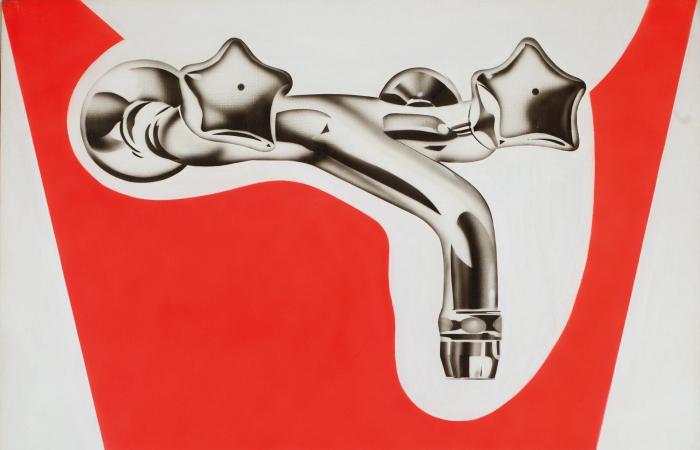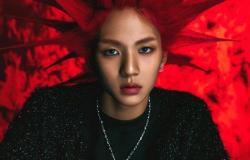It is accepted that Pop art was born in England. It’s a 1956 collage by Richard Hamilton that says so. The work represents a modern interior with a pin-up showing her breasts on a couch and a bodybuilder flexing his muscles while holding a giant lollipop with the word “pop” written on it. So much for the story.
Currently hanging at the Pully Art Museum, a collage by the British artist Eduardo Paolozzi from 1948 takes this invention back a few years and, therefore, calls into question the person who was at its origin. Everything is there: a car, a pack of cigarettes, a fridge, comic book characters cut out and glued on top of each other. There’s no word “pop” but in the mind, it’s just like that. “We wanted to show that the beginnings of this movement were already appearing just after the war. And that it was not created in the 1950s in England, nor later in the United States”explains Yan Schubert, curator of the Gandur Foundation for Art and curator of this exhibition with Victoria Mühlig, curator of the Vaudois museum.
View of the exhibition “Narrative figuration, another pop language”. © Pully Art Museum, 2024. Photographer: Mathieu Bernard-Reymond
This is the second time that the institution has joined forces with the foundation to present part of the latter’s collection. After a display devoted to abstract works from the 1950s, more than 80 works highlight narrative figuration. Also a way of showing the eclecticism of Jean-Claude Gandur who also collects Egyptian antiquities, ethnology, contemporary African painting and 18th century French furniture.
What do all these sets have in common? Whoever constitutes them rarely takes the direction of the wind. Which translates into a taste for artists and movements that have remained on the margins of history. And who sometimes, finally, get out of the rut. This is the case of lyrical abstraction. Not yet narrative figuration, a European but mainly French movement, active in the 1960s and which made Pop art, but without, above all, wanting to say it. “What will serve its artistscontinues Yan Schubert. Narrative figuration is much less salesy than Pop art. »
A boon for the collector, who can thus build up beautiful sets while the market looks elsewhere. “I grew up with these works that go under the radarexplains Jean-Claude Gandur. Some museums are starting to show interest in this period. I think it is the role of the collector to restore the spotlight to these painters who wrote the history of Europe, especially after the war. » Enough to discover, or rediscover, some gems like the close-ups of bored women by Gérard Schlosser, the urban visions of Christian Babou who makes Julian Opie before his time, the everyday objects of the Bernese Peter Stämpfli or the paintings construction site of Neuchâteloise Emilienne Farny.
Peter Klasen, Faucet No. 51968. © Gandur Foundation for Art, Geneva. Photographer: André Morin. © 2024, ProLitteris, Zurich
The exhibition also allows us to see that this offbeat pop does not always abolish the abstract painting of its time. Remove images of light bulbs, smiles Pepsodent and sink by Peter Klasen and you will have a minimal canvas. Observe the bands that Balder associates with fruit bowls and very Warholian faces and you will find in them an air of Buren.
There are still three or four stars in this colorful display. Apart from Eduardo Paolozzi, the collection also includes paintings by Erró, a pair of female legs with matching stiletto heels by an Allan Jones at the start of his career, a series of typical Jacques Monory (so pool blue), provocative Peter Sauls and cinematic Gérard Fromangers.
And then, there are the somewhat forgotten stars like Hervé Télémaque, represented by several large compositions, including this 1965 painting denouncing the occupation of Haiti, his native island, by American troops. To also say that narrative figuration is distinguished by its political and revolutionary dimension. We see it again in this painting by Ivan Messac from 1970 which condemns the Vietnam War. Jean-Claude Gandur takes a long look at the frail little girl in the painting carrying her flag: “It looks like a Banksy, doesn’t it? »
“Narrative figuration, another pop language”, until December 15, 2024, Pully Art Museum ch. Davel 2, 1009 Pully, Suisse.







